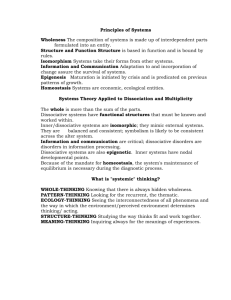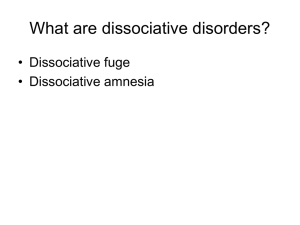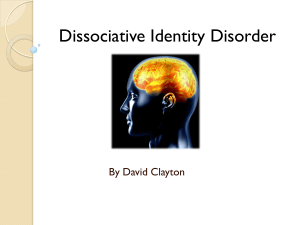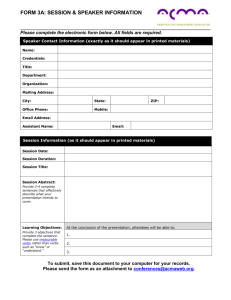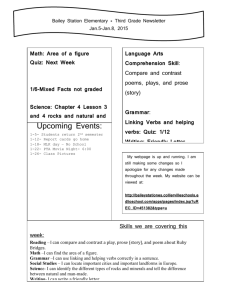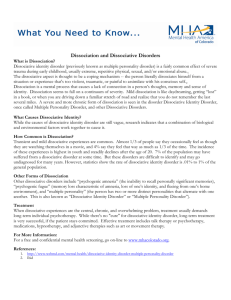Click here for the Description and Educational Objectives guidelines.
advertisement
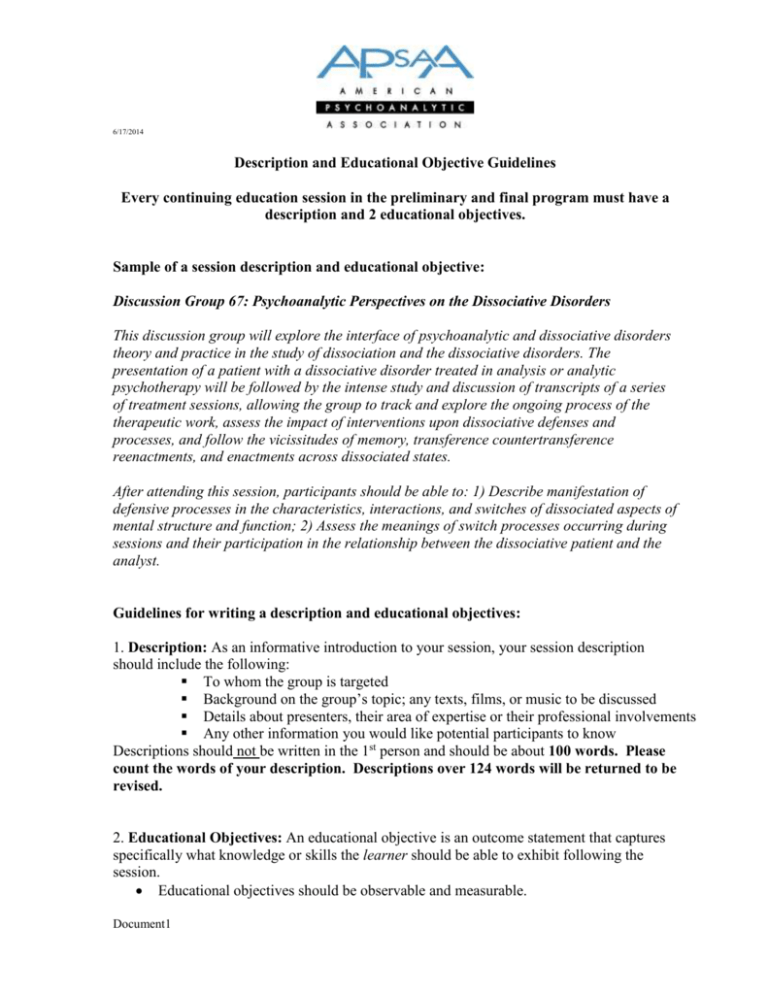
6/17/2014 Description and Educational Objective Guidelines Every continuing education session in the preliminary and final program must have a description and 2 educational objectives. Sample of a session description and educational objective: Discussion Group 67: Psychoanalytic Perspectives on the Dissociative Disorders This discussion group will explore the interface of psychoanalytic and dissociative disorders theory and practice in the study of dissociation and the dissociative disorders. The presentation of a patient with a dissociative disorder treated in analysis or analytic psychotherapy will be followed by the intense study and discussion of transcripts of a series of treatment sessions, allowing the group to track and explore the ongoing process of the therapeutic work, assess the impact of interventions upon dissociative defenses and processes, and follow the vicissitudes of memory, transference countertransference reenactments, and enactments across dissociated states. After attending this session, participants should be able to: 1) Describe manifestation of defensive processes in the characteristics, interactions, and switches of dissociated aspects of mental structure and function; 2) Assess the meanings of switch processes occurring during sessions and their participation in the relationship between the dissociative patient and the analyst. Guidelines for writing a description and educational objectives: 1. Description: As an informative introduction to your session, your session description should include the following: To whom the group is targeted Background on the group’s topic; any texts, films, or music to be discussed Details about presenters, their area of expertise or their professional involvements Any other information you would like potential participants to know Descriptions should not be written in the 1st person and should be about 100 words. Please count the words of your description. Descriptions over 124 words will be returned to be revised. 2. Educational Objectives: An educational objective is an outcome statement that captures specifically what knowledge or skills the learner should be able to exhibit following the session. Educational objectives should be observable and measurable. Document1 Educational Objectives should (1) focus on the learner, and (2) contain action verbs that describe measurable behaviors. Each session must have two educational objectives Each objective should start with an action verb (see below for recommended verbs) Verbs to consider when writing educational objectives: - list, describe, recite, write, summarize - compute, discuss, explain, predict - apply, demonstrate, prepare, use - analyze, design, select, utilize - compile, create, plan, revise - assess, compare, rate, critique Verbs to avoid when writing educational objectives: The following verbs are not acceptable: - know, understand - learn, appreciate - become aware of, become familiar with - have faith in, better understand, believe. Start your educational objectives with this sentence: After attending this session, participants should be able to: 1) 2) Some examples of well-written educational objectives: After attending this session, participants should be able to: - Recognize termination as a distinct phase and process Apply Lacanian concepts to diagnose psychosis Summarize several fMRI study designs in neuroscience and psychotherapy and identify major brain areas in depressed patients Describe regressions of individuals in the context of dyads or families as an aspect of pathology. Compare levels of psychic functioning on a continuum from the more organized to the more disturbed Employ interventions that take into account the extremely limited use of words and reality/fantasy distinctions permitted by primitive, pre-mentalized modes of thought
